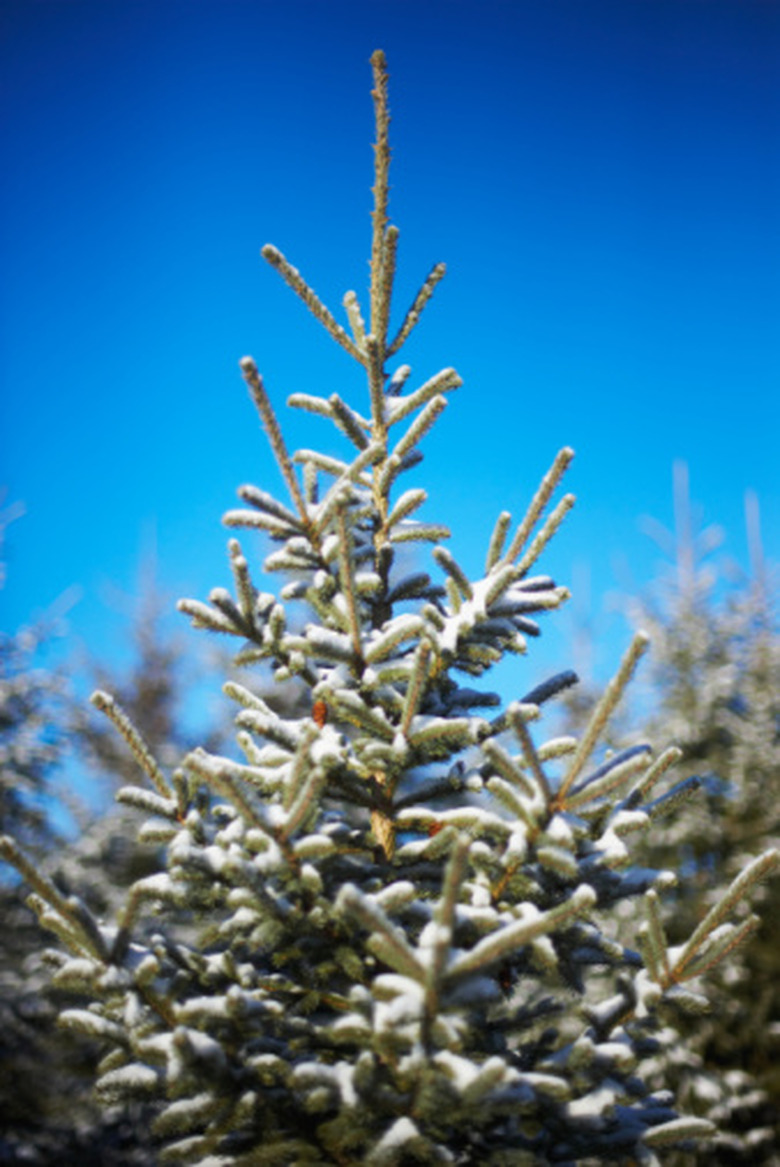What Is The Fastest Growing Spruce Tree?
The fastest-growing spruce tree, according to the Arbor Day Foundation, is the triangular-shaped Norway spruce (Picea abies), which is part of many suburban home and rural farm landscapes throughout Europe, the United States and Canada.
The fastest-growing spruce tree, according to the Arbor Day Foundation, is the triangular-shaped Norway spruce (Picea abies), which is part of many suburban home and rural farm landscapes throughout Europe, the United States and Canada.
Growth
Norway spruces may grow as high as 100 feet tall. According to the Arbor Day Foundation, the tree grows 25 inches or greater per year, making it an ideal cover for deer, birds and owls.
Description
Norway spruces are evergreen trees with dark green needles, yellow and purple flowers and drooping, cylindrical cones.
Cultivation
Norway spruces thrive in areas with full sun and well-drained, loamy soil. The tree cannot survive in wet soil conditions and over-watering may cause it to perish.
Uses
In manufacturing, the wood is used to make soundboards for stringed instruments, such as violins and guitars. Tree sap is used in varnish and some medicines. In retail, the tree is cut down in December and sold as Christmas trees.
- The fastest-growing spruce tree, according to the Arbor Day Foundation, is the triangular-shaped Norway spruce (Picea abies), which is part of many suburban home and rural farm landscapes throughout Europe, the United States and Canada.
- According to the Arbor Day Foundation, the tree grows 25 inches or greater per year, making it an ideal cover for deer, birds and owls.
Tip
The growth rate of a Norway spruce can be increased by adding more organic matter and high-nitrogen fertilizer to its soil, according to Brigham Young University Idaho.
Fast Do Spruce Trees Grow?
Spruce refers to the Picea genus of plants, which includes 35 separate species. While the majority of these coniferous tree species have a fairly unremarkable average growth rate (between 6 inches and 11 inches per year), the Sitka spruce (Picea sitchensis), Norway spruce (Picea abies) and Colorado blue spruce (Picea pungens glauca) are renowned for their extraordinarily fast rates of growth. During its 500-year life, a Sitka spruce will reach between 160 and 220 feet, with 60-inches-per-year growth rate until it reaches maturity. Spruces also are vulnerable to drought. Conversely, spruces' root systems need good drainage to thrive; planting them in a sandy or clay soil helps prevent puddles from building up.
